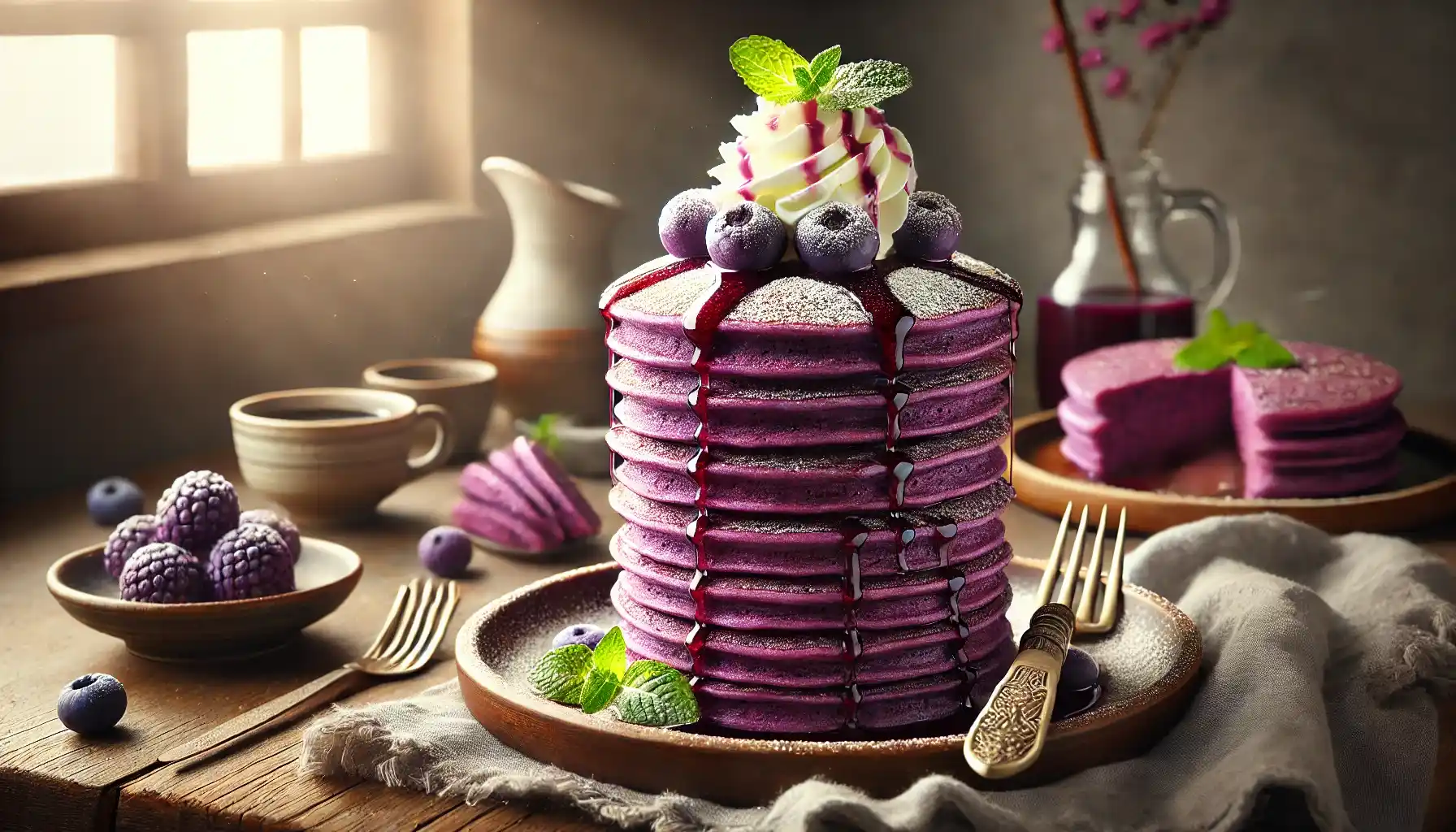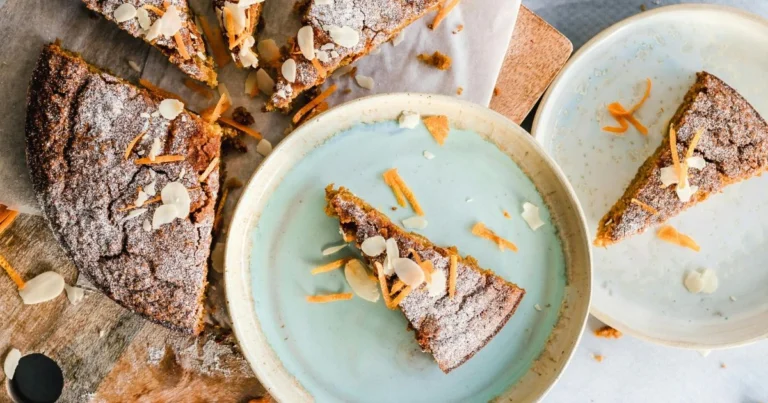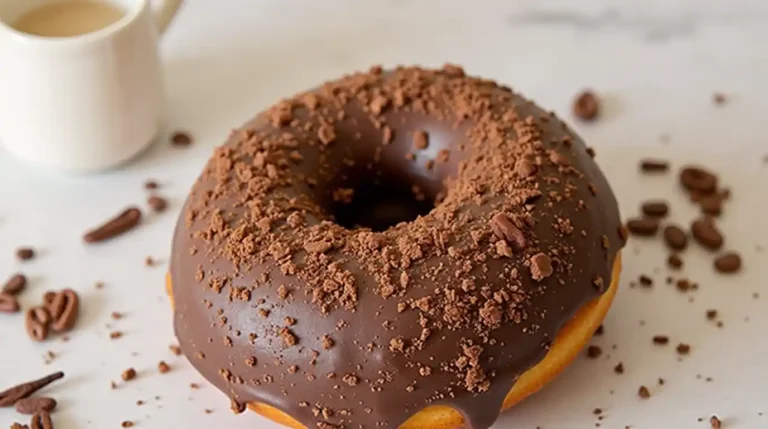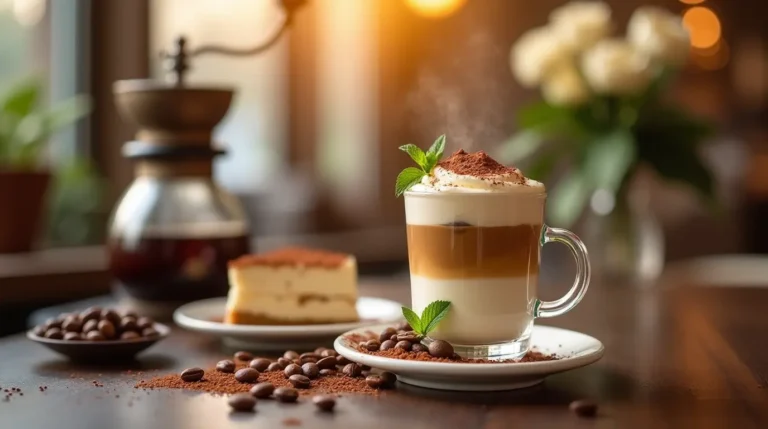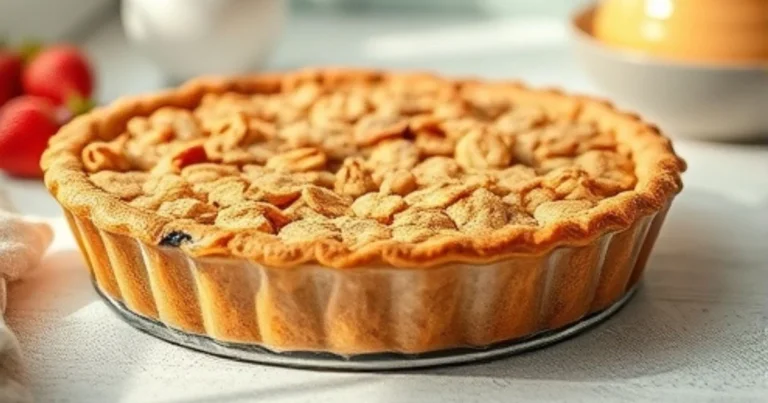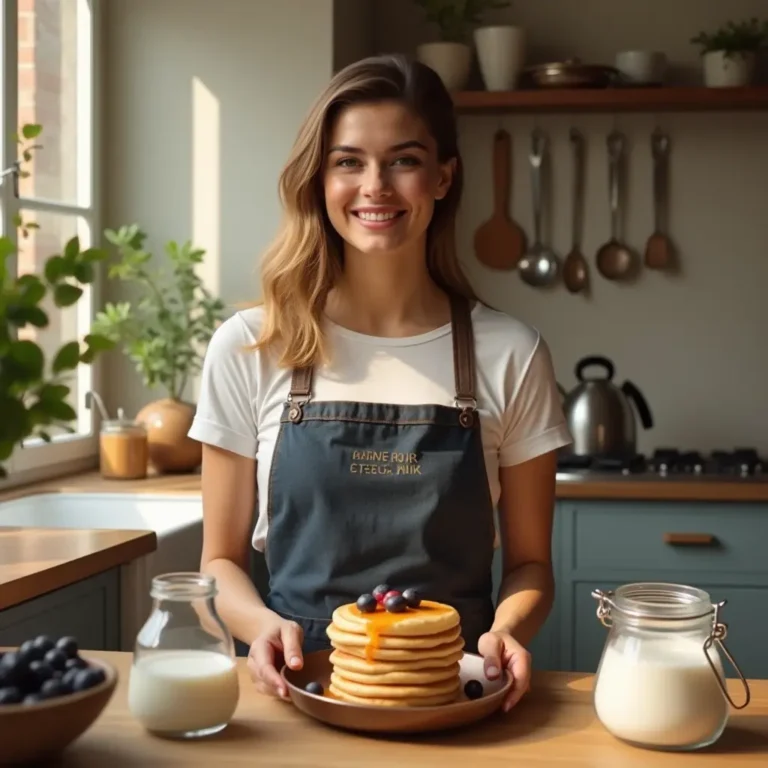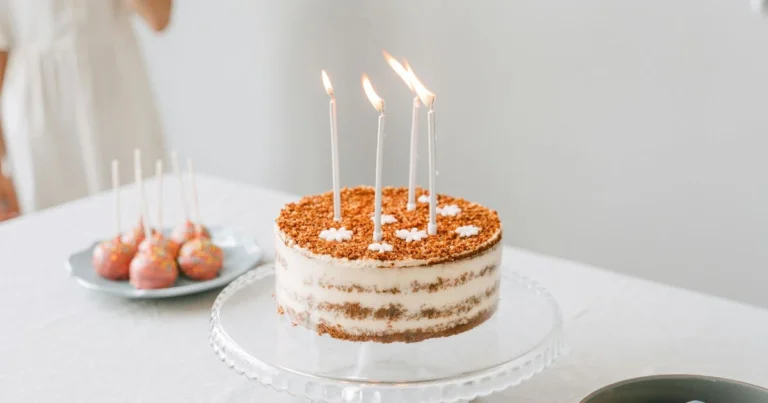Ube Pancakes: A Vibrant and Flavorful Twist on a Classic Breakfast
Pancakes often bring thoughts of fluffy stacks drizzled with syrup and paired with crispy bacon. But if you’re looking to expand your breakfast horizons and add a pop of color to your morning routine, ube pancakes should be on your radar. Ube—a purple yam hailing from the Philippines—imparts its signature vivid hue and a naturally sweet, slightly nutty flavor to these pancakes, transforming a classic breakfast dish into a unique culinary experience.
Table of Contents
In this article, we’ll dig into everything you need to know about ube pancakes: what makes ube so special, the ingredients you’ll need, step-by-step instructions for a straightforward recipe, flavor variations, and tips for plating or serving your bright violet pancakes with style. By the end, you’ll be ready to master this Instagram-worthy breakfast treat—and perhaps discover a new weekend favorite.
What Is Ube?
A Filipino Favorite
Ube (pronounced “oo-beh”) is a purple yam native to Southeast Asia, especially popular in the Philippines, where it’s a staple in desserts such as cakes, pastries, and the famous ube halaya (a sweet, thick jam). It’s prized for its bold color—ranging from lavender to deep violet—and its subtly sweet, earthy flavor.
Ube vs. Taro vs. Purple Sweet Potato
Though often confused with taro or Okinawan purple sweet potatoes, ube is a distinct tuber. While taro can also look purple and sweet potatoes can have a striking hue, ube delivers a sweeter, more mellow profile with hints of vanilla and nuttiness. The color in ube is generally more intense, and many Filipino desserts capitalize on that vibrant pigment to create eye-catching, pastel-hued confections.
Nutritional Perks
Although adding ube to pancakes often includes sugar and other typical pancake ingredients, the yam itself boasts nutrients such as fiber, vitamin C, and antioxidants. Of course, the exact nutrition will depend on how you prepare your pancakes, but using a colorful and nutrient-rich ingredient can be a small step toward variety in your diet.
Why Ube Pancakes Are Trending
- Visual Appeal
The intense purple color photographs beautifully, catching attention on social media feeds. Food enthusiasts love experimenting with aesthetically pleasing dishes, and a bright purple pancake stack is sure to stand out. - Unique Flavor
Ube’s flavor profile—mildly sweet and subtly earthy—pairs well with classic pancake toppings like syrup, whipped cream, or fruit. It also complements coconut, which is another popular Filipino flavor, adding further dimension to breakfast dishes. - Cultural Influence
As Filipino cuisine continues to gain recognition globally, more people are being introduced to ube-based creations. Restaurants and cafes across the world have begun adding ube-inspired items to their menus, solidifying its status as a foodie favorite. - Versatility
Ube can be incorporated into various recipes—ice creams, cookies, cakes, and now pancakes. Its adaptability in both sweet and savory contexts encourages creative home cooks to experiment with bright, purple-hued recipes.
Key Ingredients for Ube Pancakes
Ube Purée or Ube Halaya
- Ube Purée: You can make your own by boiling or steaming fresh ube until tender, then mashing or blending it to a smooth paste. Alternatively, some specialty grocery stores sell frozen ube purée.
- Ube Halaya: A sweetened jam-like spread. If using this, you can reduce some of the sugar in your pancake batter to avoid overly sweet results.
All-Purpose Flour
A standard choice for pancake batter, yielding a fluffy texture. You can experiment with half whole wheat flour for more fiber, but note the texture will be slightly heavier.
Baking Powder and Baking Soda
These leavening agents help pancakes rise and become airy. When combined with an acid (like buttermilk or a bit of vinegar mixed into milk), they work effectively to create a light structure.
Sugar
Depending on how sweet your ube purée or halaya is, you can adjust the sugar. Granulated sugar is commonly used, though some people prefer brown sugar or coconut sugar to complement ube’s earthy notes.
Milk or Buttermilk
Provides the liquid base. Buttermilk adds tang and tenderness; regular milk is also fine. Non-dairy alternatives, like coconut or almond milk, can be substituted for those with dietary restrictions.
Egg(s)
Enhance structure and help bind the batter. If you’re vegan, consider using a flax egg (1 tablespoon ground flaxseed + 3 tablespoons water) or other plant-based egg replacers.
Butter or Oil
Supplies richness and moisture, preventing pancakes from sticking to the pan. If using melted butter, let it cool slightly before mixing into the batter to avoid cooking the eggs prematurely.
Vanilla Extract
A subtle boost that complements ube’s sweetness, emphasizing its dessert-like flavor.
Optional Food Coloring
Although ube itself can provide some color, not all purées are equally vibrant. Adding a drop or two of purple gel food coloring can intensify the violet hue, but this is purely aesthetic.
Step-by-Step Recipe: Ube Pancakes
Below is a simple recipe that yields roughly 8–10 medium pancakes. Feel free to double if serving a larger crowd—or if you want leftovers for a quick breakfast throughout the week.
Ingredients
- Dry Mix
- 1½ cups (about 190g) all-purpose flour
- 2 tablespoons sugar (adjust based on the sweetness of your ube)
- 2 teaspoons baking powder
- ¼ teaspoon baking soda
- ½ teaspoon salt
- Wet Mix
- 1 cup (240ml) milk or buttermilk
- 1 large egg, room temperature
- 2 tablespoons melted unsalted butter (or neutral oil)
- 1 teaspoon vanilla extract
- ¾ cup (about 150g) ube purée or sweetened ube halaya (adjust sugar if halaya is very sweet)
- Optional: A drop of purple food coloring gel for a more vibrant color
Instructions
1. Combine Dry Ingredients
- In a medium bowl, whisk together flour, sugar, baking powder, baking soda, and salt. Ensure everything is evenly distributed.
2. Blend Wet Ingredients
- In a separate mixing bowl or large measuring cup, whisk milk (or buttermilk), egg, melted butter, vanilla extract, and the ube purée/halaya.
- If you’re using halaya (which is already sweetened), taste the mixture briefly and adjust sugar levels in the dry mix accordingly.
- Add a small drop of purple food coloring if you want an extra pop of color.
3. Mix Wet and Dry
- Create a well in the center of your dry ingredients. Pour in the wet mixture, stirring gently with a spatula or spoon. Combine just until there are no large streaks of flour; a few small lumps are fine. Overmixing can make the pancakes dense.
4. Rest the Batter
- Let the batter sit for about 5 minutes. This allows the gluten in the flour to relax and the baking powder to begin activating, resulting in fluffier pancakes.
5. Cook the Pancakes
- Preheat a non-stick skillet or griddle over medium heat. Lightly grease the surface with butter or cooking spray.
- Use about ¼ cup of batter for each pancake, pouring it into the skillet and spreading slightly if needed.
- Cook for 2–3 minutes, until you see small bubbles forming on the surface. Carefully flip, then cook the other side for another 1–2 minutes or until both sides are lightly golden (the edges may look more purple).
6. Keep Warm and Serve
- Transfer the cooked pancakes to a plate lined with a clean towel or place them on a baking sheet in a low oven (around 200°F/93°C) to keep them warm.
- Repeat with the remaining batter until all pancakes are cooked.
Topping and Serving Suggestions
Classic Maple Syrup
Drizzle warm maple syrup over your purple stack for a classic pancake finish. The amber sweetness merges wonderfully with ube’s earthy undertones.
Whipped Cream and Berries
Top each pancake with a swirl of whipped cream and fresh berries—like strawberries or blueberries. The bright fruit flavors elevate the mild sweetness of the pancakes while adding a splash of contrasting color.
Coconut Flakes or Coconut Cream
Double down on tropical vibes by sprinkling lightly toasted shredded coconut over your pancakes. Alternatively, drizzle sweetened coconut cream for extra richness.
Sweet Condensed Milk
A staple in many Southeast Asian desserts, condensed milk brings a thick, milky sweetness to the dish. Drizzle a small stream over the top for a luscious finish.
Ube Halaya Drizzle
If you have leftover sweetened ube jam, warm it slightly to create a drizzle or swirl. This intensifies the pancake’s ube flavor and truly underscores the unique taste.
Creative Variations
- Ube and Cream Cheese Swirl
- Mix softened cream cheese with a bit of powdered sugar. Spoon small dollops onto each pancake before flipping, creating pockets of creamy tang inside.
- Chocolate Chip Ube Pancakes
- Fold mini chocolate chips into the batter for a subtle chocolate note, making it a kid-friendly, dessert-like breakfast.
- Vegan Ube Pancakes
- Replace eggs with a flax egg (1 tablespoon ground flaxseed + 3 tablespoons water) and dairy milk with almond or coconut milk. Use coconut oil or vegan butter as the fat.
- Savory Twist
- Skip or reduce the sugar in the batter. Top with bacon bits, fried egg, or a drizzle of sriracha mayo for a sweet-and-salty, brunch-inspired spin.
- Mini Ube Pancakes
- Use a tablespoon of batter for each pancake to create bite-sized treats. Perfect for children or as a unique addition to brunch buffets.
Tips for the Best Ube Pancakes
- Use Fresh Ingredients
- If you’re using fresh ube, ensure it’s cooked thoroughly and puréed smoothly. For halaya or frozen purée, check expiration dates and thaw properly.
- Mind the Heat
- Cooking pancakes on too high a flame can burn the exterior before the inside cooks, while a low flame may result in undercooked centers. Medium heat is usually best for even browning.
- Adjust Consistency if Needed
- If the batter seems too thick (common when using starchy ube), add a splash more milk. If it’s too runny, fold in a spoonful of flour.
- Taste Before Cooking the Entire Batch
- Sometimes the first pancake can act as a trial. Assess the sweetness, color, and consistency, then adjust subsequent pancakes (e.g., add more sugar, or use additional food coloring).
- Work in Batches
- Overcrowding a pan can lead to uneven cooking. Make pancakes in small batches, transferring finished ones to a warm place until ready to serve.
Frequently Asked Questions
1. Where can I find ube products?
Many Asian supermarkets carry fresh ube, frozen ube purée, or jars of ube halaya. You can also find them online through specialty food retailers.
2. Can I use purple sweet potato instead of ube?
Yes, though it won’t be the exact same flavor or color. Purple sweet potatoes offer a similar hue but tend to be a bit denser and less sweet than ube.
3. Why are my pancakes not as vibrantly purple?
The color intensity can vary based on the ube’s quality. Adding a small amount of purple food coloring helps achieve a more eye-catching shade if desired.
4. Can I make the batter ahead of time?
Pancake batter is best used fresh. If you must prep ahead, store it in the fridge overnight, but be aware that the leavening agents might lose potency over time, leading to slightly denser pancakes.
5. How do I store leftover pancakes?
Refrigerate in an airtight container for up to two days, or freeze for up to a month. Warm them in a toaster or microwave before serving.
Final Thoughts
Ube pancakes are more than just a visually stunning dish—they represent a fusion of cultural flavors and comforting breakfast traditions. The signature purple hue not only brings novelty to your morning routine but also introduces a subtle, earthy sweetness that stands apart from typical pancake varieties.
From the lusciousness of fresh ube purée to the playful swirl of cream cheese, the possibilities for personalization are endless. Whether you’re serving these purple-hued delights at a leisurely weekend brunch or dazzling your guests at a special event, ube pancakes are sure to spark conversation and leave an unforgettable impression. Embrace the vibrant color and gentle sweetness, and you might just discover a new go-to breakfast obsession.
For more Filipino-inspired recipes and ideas on using ube in creative ways, visit Kawaling Pinoy’s Ube Recipes. They offer comprehensive guides, cooking tips, and cultural insights to help you master this captivating purple ingredient.

